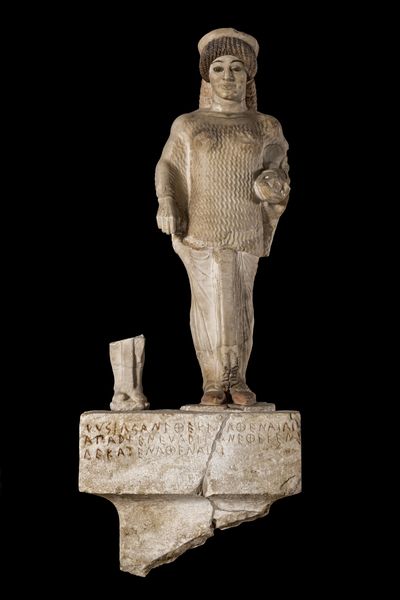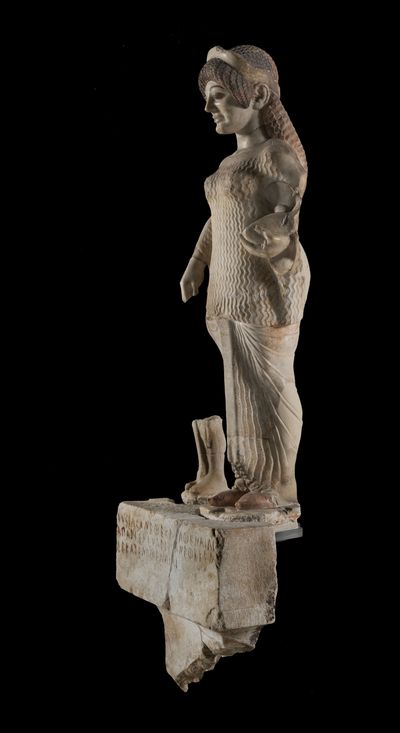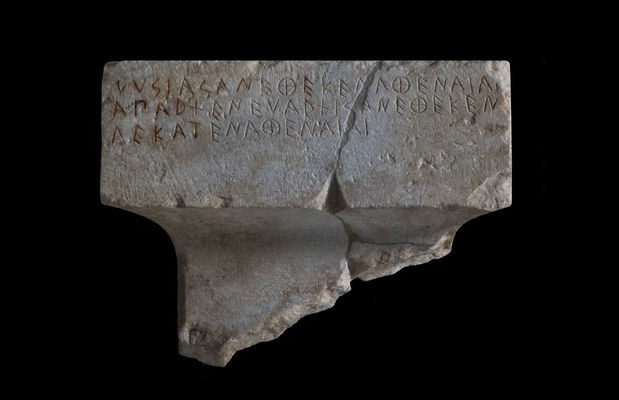Korai statues on a base of a double dedication
Inventory number
Ακρ. 683
Artist
Peloponnesian workshop (?)
Category
Sculpture
Period
Archaic Period
Date
Around 510 BC
Dimensions
Height: 0.848 m and 0.175 m
Length: 0.19 m and 0.085 m
Width: 0.18 m and 0.06 m
Material
Marble from Paros
Location
Archaic Acropolis Gallery









